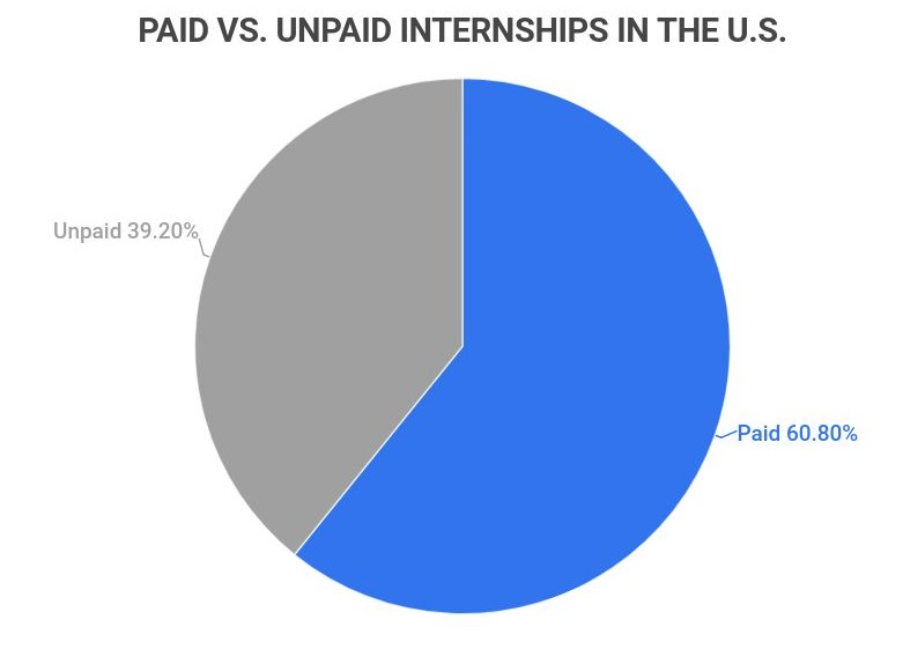Internship programs can serve as talent pipelines and centers of innovation for organizations. In an ever-competitive landscape for top talent, having a well-structured internship program is not just a “good-to-have” but a strategic necessity. In a recent poll by NACE, 80 percent of responding employers identified internships as their most effective recruiting strategy.
Image taken from NACE
This finding suggests that internships are a long-term investment in human capital. But how can your organization design an internship program that serves your needs and those of your interns? Here’s an in-depth guide.
How To Design an Effective Internship Program
Creating a rewarding internship program isn’t just about hiring temporary help for short-term projects. It’s about developing a pipeline of talent that can add value to your organization for years to come. Here’s a comprehensive guide to designing an internship program that benefits your company and interns:
Identify the purpose and objectives
Many employers now offer structured internship programs. However, those with outlined objectives have higher retention rates, often absorbing most of their interns as full-time employees.
For employers looking to streamline their recruitment process, this is a win. Interns with experience in the organizational process require minimal additional recruitment efforts.
According to a study, a US employer spends roughly $4,000 to get a new employee. The ability to convert interns into full-time roles allows the organization to bypass or substantially reduce this cost.
When identifying the objectives, don’t isolate the program into one department. Get input from various department heads to make it multi-disciplinary and enriching. Remember to keep your goals realistic.
Identify what the program can offer regarding skill development, project involvement, and future employment chances.
Understanding the program’s objectives will help you allocate the right resources, tailor the training programs, and influence the selection process. It sets the blueprint for the program’s subsequent stages.
Define intern roles and responsibilities
For an internship program to be mutually beneficial, it’s crucial to lay out well-defined roles and responsibilities for the interns. This level of clarity contributes to a better work experience for the interns and ensures the organization gets the most value out of the internship program.
When interns know the expectations, they perform better and stay engaged. With specific roles and tasks, interns can better identify the skills they need to develop, aligning closely with their career goals.
- Start with detailed job descriptions that outline what the role entails, the skills required, and the specific tasks the intern will be responsible for.
- Use the orientation period to clarify any ambiguities and explain the role more in-depth. Training modules can be used to further elaborate on specific job tasks.
- Create role templates with specific project goals, timelines, and the preferred skill set.
- Establish a two-way feedback mechanism to adapt roles to company needs and interns’ expertise.
Clarity in roles prevents misunderstandings, reduces redundancy, and enhances productivity. It ensures the intern can see a clear developmental trajectory during their tenure, making the experience more rewarding.
Smooth out legalities and compensation
Research shows that 39.2 percent of US internships are unpaid. While this doesn’t violate federal laws, it should be something to consider.
Image taken from Zippia
Unpaid internships bypass fundamental labor protections because the Fair Labor & Standards Act (FLSA) doesn’t classify unpaid interns as “employees.” This distinction leaves them vulnerable to harassment and discrimination. This legal loophole deprives unpaid interns of the safeguards their paid counterparts enjoy.
According to the 2022 Student Survey by NACE, students engaging in paid internships are more likely to secure job offers.
So, it’s best to consult the legal department to design the internship contracts. If direct financial payment isn’t feasible, consider other perks like learning allowances, transport reimbursements, or meal coupons. Help them open a student bank account where they can receive their allowances.
Legal compliance ensures that your program meets ethical scrutiny and regulatory standards. Offering some form of compensation can also be a crucial factor in attracting quality candidates.
Develop a selection process
A well-designed selection process ensures that those who make the cut will stay on for the long term. Start implementing relevant tests or tasks to gauge an intern’s skills beyond their resume. As cultural fit is also an essential measure of organizational success, use personality or behavioral questions during the assessment.
Interns should add value and become future full-time employees. Therefore, investing time in a robust selection process will save time in the long run.
Invest in onboarding and orientation
Onboarding sets the first impression of your organization. A smooth, informative orientation will help interns adjust culturally and operationally. Prepare a welcome kit that includes paperwork and resources they’ll need for projects.
Take some time out to host a physical or virtual office tour. This will help them get accustomed to the environment.
Have a structured learning and development program
Today’s workforce values career development more than other job perks. This highlights the importance of learning and development during the internship.
Besides project-specific training, provide workshops that enhance soft skills like communication and teamwork. Allow interns to attend industry events, either in person or virtually.
Educational development shouldn’t be limited to internal processes and projects. Broadening exposure enhances the intern’s skills and market awareness, making them more valuable as future employees.
Do performance evaluation and feedback
Timely, constructive feedback is the cornerstone of improvement and skill development. It helps interns understand where they stand and what they must work on for future roles.
Continuous feedback boosts employee engagement levels. Engaged interns are more productive and more likely to accept a full-time job offer post-internship.
Don’t wait until the end of the internship. Have a midpoint review to course-correct and set the tone for the rest of the internship. Encourage interns to seek feedback from their mentors, peers, and other departments.
Do an exit interview
The exit process shouldn’t merely be a sign-off but an evaluation period that sets the stage for future engagements. Whether through full-time roles or employee networks, aim to keep the relationship ongoing. The feedback gathered can be instrumental in refining future internship programs. It’s an excellent way to reduce turnover.
Conduct these exit interviews not as a formality but as a data-gathering exercise. Offer certificates of completion and LinkedIn recommendations to high-performing interns.
Make Your Internship Program a Talent Pipeline
An internship program is more than a temporary arrangement. It’s a strategic endeavor with far-reaching implications for talent acquisition and organizational development. By paying close attention to each aspect, you’re not just giving young people a brief stint in the corporate world. You’re laying the foundation for their career and your future workforce.
Don’t let your internship program be a mere footnote in your HR strategy. Make it a vibrant, integral part of your talent pipeline. A well-curated internship program can be a win-win: a life-changing experience for interns and a talent pool for employers.
By implementing these practices, your organization can create an internship program that adds value in the present and for years.







Leave A Comment